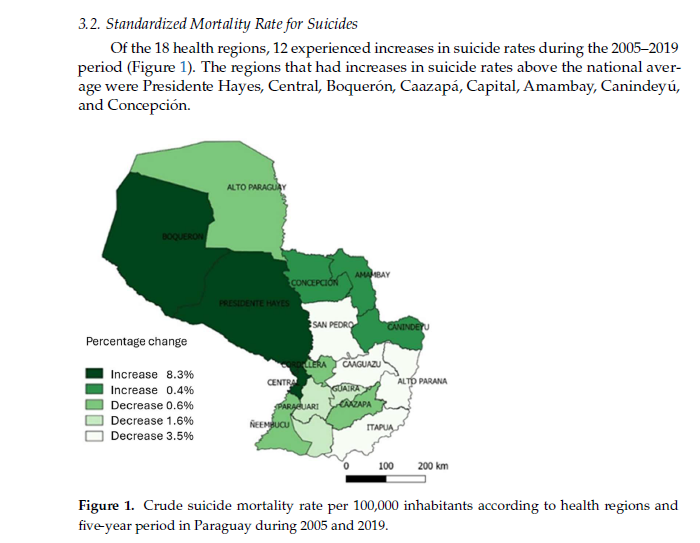Epidemiologia de la mortalidad por suicidio en Paraguay de los años 2015 al 2019: Un estudio descriptivo.
Suicide is an important public health problem, fundamentally affecting the younger population and responding to multiple biological, psychological, and social causes. The objective of this study was to characterize changes in suicide mortality, suicide methods, and years of potential life lost from 2005 to 2019 in Paraguay. This observational, descriptive study used data from the Vital Statistics Information Subsystem of the Ministry of Public Health and Social Welfare. The average mortality rate from suicide was 4.9 per 100,000 inhabitants, with an increase from 4.2 between 2005 and 2009 to 5.8 from 2014 to 2019. Suicide was more common in men (75%) than in women. In men, the highest mortality rate was observed among those 20–24 years old, whereas in women, the ages most affected were the 15–19-year-old age group. The most-used method for suicide was hanging. The most frequent place of suicide occurrence was at home (73%). The seasonality of suicide occurrence showed a slight increase in the spring–summer months compared with autumn–winter (53% vs. 47%). The rate of potential years of life lost statistically significantly increased from 2005 to 2019. Public health measures need to be implemented to investigate the underlying reasons and implement interventions in the population to decrease suicide mortality in Paraguay.
Clic en el siguiente enlace para Descargar
![Logo de la [Institución Pública]](https://dvent.mspbs.gov.py/wp-content/uploads/2023/08/cropped-2023-08-16_122207.png)
